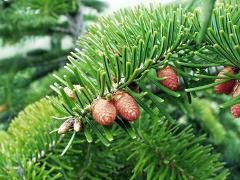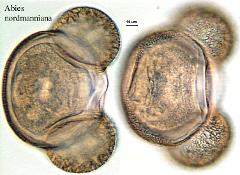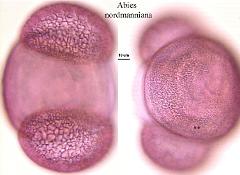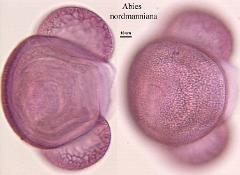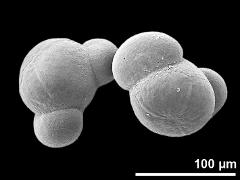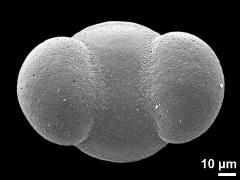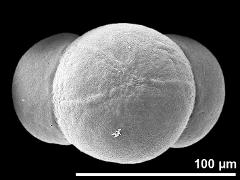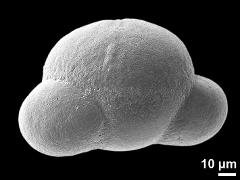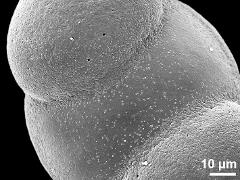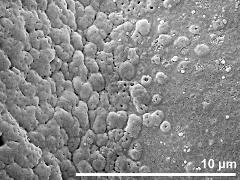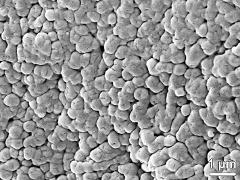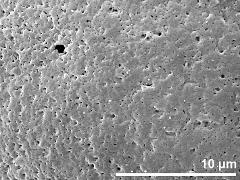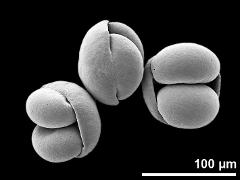Abies nordmanniana
Taxonomy: Gymnospermae, Pinales, Pinaceae, Abies
Published: 2020-07-27
Pollen Description
Shape, Size and Aperture
pollen unit: monad, dispersal unit and peculiarities: monad, size (pollen unit): very large (>100 µm), size of hydrated pollen (LM): >100 µm, shortest polar axis in equatorial view (LM): 51-100 µm, longest polar axis in equatorial view (LM): >100 µm, shortest diameter in equatorial or polar view (LM): 51-100 µm, longest diameter in equatorial or polar view (LM): >100 µm, pollen class: saccate, polarity: heteropolar, P/E-ratio: oblate, shape: -, outline in polar view: no suitable term, dominant orientation (LM): polar, P/E-ratio (dry pollen): oblate, shape (dry pollen): -, outline in polar view (dry pollen): circular, infoldings (dry pollen): aperture(s) sunken, aperture number: 1, aperture type: leptoma, aperture condition: -, aperture peculiarities: -
Ornamentation and Structure
LM ornamentation LM: scabrate, verrucate, gemmate, nexine: -, sexine: -, SEM ornamentation SEM: psilate, perforate, microverrucate, suprasculpture SEM: -, TEM tectum: -, infratectum: -, foot layer: -, endexine: -, intine: -, wall peculiarities: saccus, impression mark, supratectal element: -
Miscellaneous
pollen coatings: -, reserves in cytoplasm: -, cell number: -, Ubisch bodies: -
Author(s) of diagnosis: Halbritter, Heidemarie; Heigl, Helmut
Pictures
Picture legend
- aspect, photographer: Halbritter, H.
- hydrated Pollen - fresh, glycerine, unstained, photographer: Heigl, H.
- hydrated Pollen - fresh, glycerine, ruthenium red, photographer: Heigl, H.
- hydrated Pollen - fresh, glycerine, ruthenium red, photographer: Heigl, H.
- hydrated pollen grains - fresh, rehydrated (water) & critical point dried & sputter coated with gold, photographer: Halbritter, H.
- polar distal view - fresh, rehydrated (water) & critical point dried & sputter coated with gold, photographer: Halbritter, H.
- polar proximal view - fresh, rehydrated (water) & critical point dried & sputter coated with gold, photographer: Halbritter, H.
- equatorial view - fresh, rehydrated (water) & critical point dried & sputter coated with gold, photographer: Halbritter, H.
- leptoma - fresh, rehydrated (water) & critical point dried & sputter coated with gold, photographer: Halbritter, H.
- leptoma border - fresh, rehydrated (water) & critical point dried & sputter coated with gold, photographer: Halbritter, H.
- exine surface (cappa) - fresh, rehydrated (water) & critical point dried & sputter coated with gold, photographer: Halbritter, H.
- exine surface (saccus) - fresh, rehydrated (water) & critical point dried & sputter coated with gold, photographer: Halbritter, H.
- dry pollen grains - dry, sputter coated with gold, photographer: Halbritter, H.
Literature
- (1998) Preparing living pollen material for scanning electron microscopy using 2,2-dimethoxypropane (DMP) and criticalpoint drying. Biotechnic Histochem 73: 137–143
Copyright and Citation
Cite this publication as:
Halbritter H., Heigl H. 2020. Abies nordmanniana. In: PalDat - A palynological database. https://pc8.botanik.univie.ac.at/pub/Abies_nordmanniana/303739;jsessionid=5C9ED5399F86801D637FF144D9D45B8E; accessed 2025-01-10

